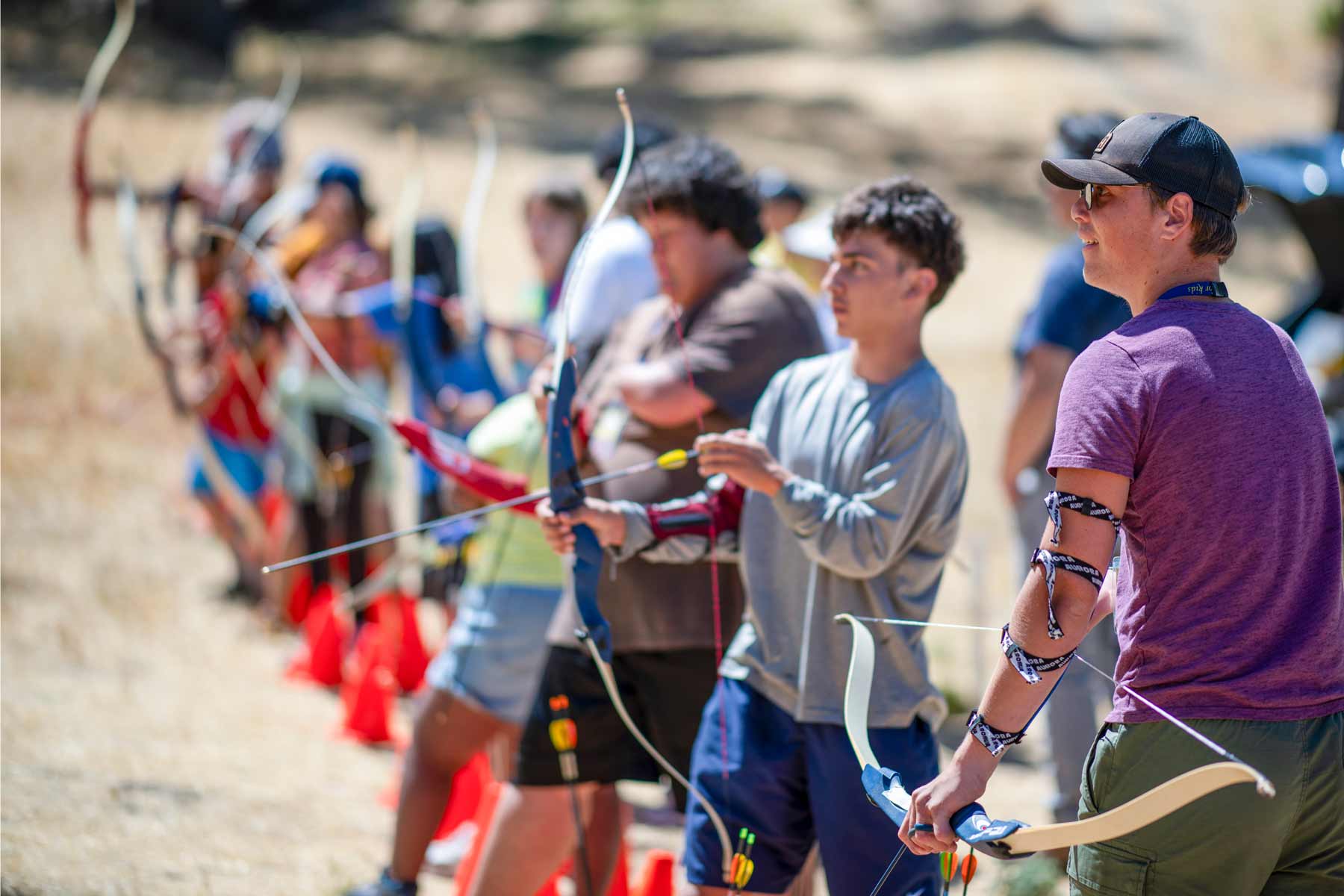Parker steps to the line, shoulders turned as he reaches down to draw an arrow from his quiver. He fits it to the string of his bow.
Up and down the range, Parker and his fellow campers take aim at paper targets pegged to haybales. Nearby, two counselors sit on either side of a young girl and hold her bow between them. She draws back the bowstring with her feet.
Parker pulls his bow taught with two webbed fingers, firing off his arrow.
And misses.
"Nooo!" cries the 15-year-old, spinning around in exaggerated exasperation.
Parker was born with fused fingers due to Laurin-Sandrow syndrome, a rare genetic condition. As a young child, surgeries helped separate his fingers and therapy improved his range of movement. Eventually, a family friend eventually referred him here, to Camp Winning Hands.

Camp Winning Hands is a free, week-long summer camp for kids 7-17 with limb differences. It was co-founded by UCSF Benioff Children's Hospital Oakland occupational therapist Ginny Gibson, OTD, OTR/L, CHT. Each year, the project welcomes nearly 100 campers for a week of activities like archery, rock climbing and swimming. Many Winning Hands campers were, like Parker, born with limb differences, ranging from webbed fingers to missing digits, hands or arms. Still, others have lost limbs to accidents.
About three in every 2,000 babies annually are born with a hand or limb difference. For many kids, Camp Winning Hands is the first time they will meet another child with a limb difference.
Gibson works as part of the UCSF Benioff Oakland's Pediatric Hand and Reconstructive Surgery Center, which provides occupational therapy and surgery to treat a range of hand and arm conditions in children. The center is one of the Bay Area's busiest, with more than 13,000 patient visits annually. Its integrative approach draws on experts in pediatric orthopedics, hand surgery, plastic surgery and microsurgery to provide a level of care unmatched in most other hospital settings.
Gibson works as part of the UCSF Benioff Oakland's Pediatric Hand and Reconstructive Surgery Center, which provides occupational therapy and surgery to treat a range of hand and arm conditions in children. The center is one of the Bay Area's busiest, with more than 13,000 patient visits annually. Its integrative approach draws on experts in pediatric orthopedics, hand surgery, plastic surgery and microsurgery to provide a level of care unmatched in most other hospital settings.
Each year, volunteer occupational therapists and nurses from UCSF Benioff Oakland and Shriners Hospitals for Children - Northern California join Gibson in staffing the camp. Shriners Hospitals for Children co-sponsors the camp.
The Taylor Family Foundation is the primary funder of Camp Winning Hands. The foundation supports children with chronic and life-threatening conditions, including hosting them at its specially designed Livermore, California campground.
A unique home away from home
Camp Winning Hands is the only summer camp specifically for children with limb differences west of the Rocky Mountains. Which is why Parker flies in from Idaho each year. This morning, he finished the camp's "teen talk" before ambling to the archery range. At teen talk, older campers and counselors - many with their own limb differences - discuss everything from learning how to tie their shoes to dealing with unwanted stares.
"A majority of campers have been made fun of; I've been called 'cross fingers,' 'sticky hands;' I've been sworn at," Parker says. "But I've gotten a lot of amazing advice from other campers and the counselors."






